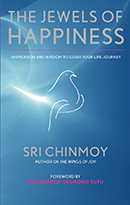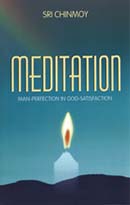Every day there is only
One thing to learn:
How to be honestly happy.
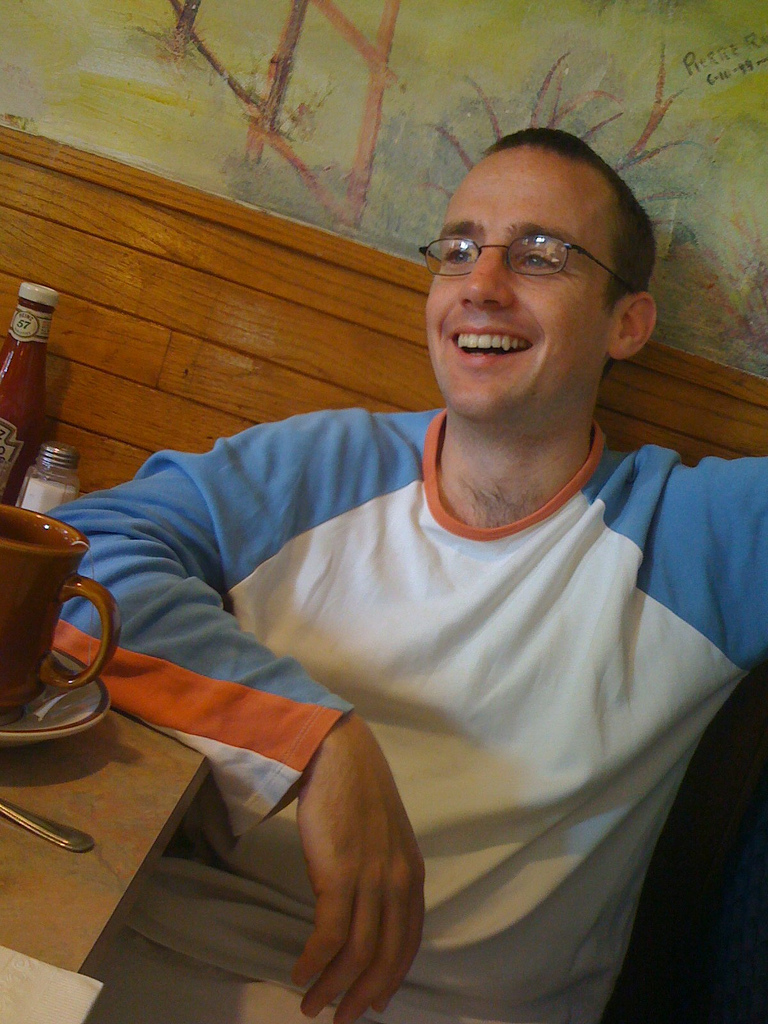
Following your Heart
What is happiness to you?
Hmm. Its hard to boil it down into a mental definition, because happiness is definitely not something that happens when you’re bogged down with thought and analysis. It is definitely more of the heart and soul than it is of the mind. When I’m in my heart, I’m happy – I guess that’s the simplest answer I can give you! Many people look for one big thing in life to make them happy, a sense of following their destiny. I used to think like that too, but over the years I’ve experienced that that sense of life-purpose and direction can also be found be lots of little things – music, sports, meditation, helping others – as long as you follow your heart.
What attitudes to life help you stay happy?
One thing that definitely helps me is not being too hard on myself for my faults and imperfections (and believe me, there are quite a few!). As I was growing up, I was always attracted by the idea of self-improvement, but I thought it could only be done through self-criticism and self-chastisement. I remember coming across the philosophy of Sri Chinmoy (the author of The Jewels of Happiness) which emphasised personal transformation through acceptance and transcendence, and initially wondering how could that be possible? At the time, I equated self-acceptance with a kind of giving up. But in fact, it is only when you accept and love yourself that you can get into the proper frame of mind to go beyond your current capacities. So by all means, I set myself high goals at the beginning of each day, but at the same time I try to remain cheerful and grateful if for some reason it doesn’t work out.
Can you remember a time when you were recently happy?
I like trying out things and new experiences. One recent adventure I’ve embarked on is ultra-distance running – and earlier this year I competed this year in the Self-Transcendence Ten Day Race, which is held each April in New York. As I was running, it really struck me how after a few days the different layers of the complaining mind seemed to dissolve away into a state of mindfulness, and there is a tremendous simplicity, intensity and vibrancy to everything you feel and experience – joking with a fellow runner, watching the sunrises and sunsets, the promptings of your own soul.
I had so many amazing experiences during that race – ill just mention one of them. During the fifth day or so I had a rough period of the race where I felt very weak because I wasn’t eating enough, and I really just had to put my head down, stay positive and get through it. But at one point it just subsided, to be replaced by this beautiful feeling of consciousness, a connection with the universe so intimate, so filled with sweetness. It was as if this body of mine was just a vessel being used for a higher and deeper purpose, that if the universe wanted me to do millions and millions of laps around this track for the rest of my natural life, then I was perfectly happy to go along with that.
I would usually stop running at around 11.30 in the evening to rest for 4/5 hours, and retire to my lodgings, a tent in which my brother and I had somehow managed to wedge a pretty comfortable bed. And so I fell asleep, still in this beautiful space of being. For some reason I woke up at 1 or 2 in the morning – I wanted to get out of my tent to use the bathroom, but in my sleepy state I pulled open the tent flap that was lying directly over my bed. And there I was, all tucked up in my bed underneath layers of comfiness, staring at a sky filled with more stars than anyone could ever comprehend. That was quite special.
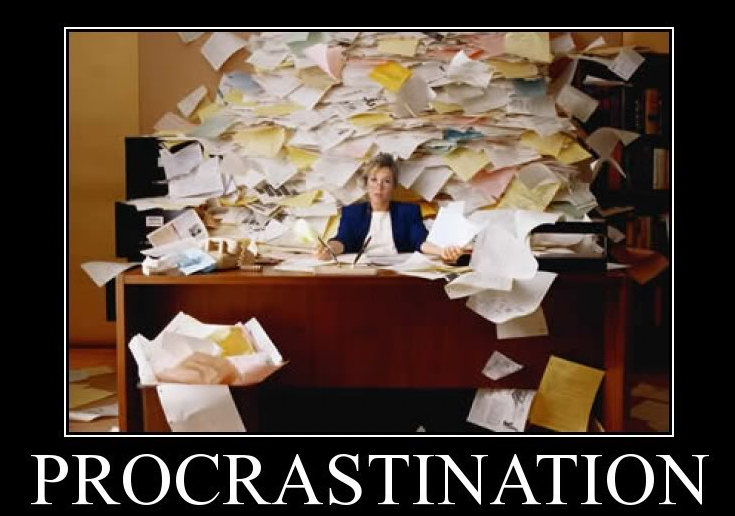
How to get things done
Recognize this scenario? You start your day full of enthusiasm and determination to get a lot of work done, but when evening falls you are surprised at how little you have actually achieved. Unfortunately, time didn’t stop to wait for you while you were busy chatting with your friends on Facebook or watching You Tube videos. Your to-do list still shows an alarming number of unticked boxes.
One of the main reasons we don’t get things done is because we postpone or procrastinate. This is nothing to be ashamed of, as research has shown that roughly 95% of all people suffer from procrastination. Yet it is a problem worthwhile tackling, argues Piers Steels, a Canadian professor of psychology who studied procrastination for over ten years. Steels’ research has shown that extreme procrastinators are less happy, healthy and wealthy than those who usually get their to-do boxes ticked.
To be sure, procrastination does not mean postponing things because they don’t fit into your schedule; it means postponing them irrationally, thinking or knowing you should be doing them now.
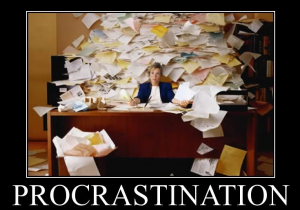 The opposite of procrastination is motivation. The lower your level of motivation, the more you will procrastinate, and vice versa. According to procrastination professor Steels, motivation (and therefore procrastination) is determined by four factors.
The opposite of procrastination is motivation. The lower your level of motivation, the more you will procrastinate, and vice versa. According to procrastination professor Steels, motivation (and therefore procrastination) is determined by four factors.
- The first is our expectation of how, if and when we will accomplish the task. If our expectation is low (we doubt if we will be able to stick to that diet, or we don’t think we will ever be able to learn how to meditate), motivation is also low, and we will be more likely to put the task off.
- A second contributor to our motivation is how much we enjoy the task we want to get done – in other words, the fun factor. The more tedious the job, the more likely we are to postpone it.
- A third factor is time. The more time we have to complete a certain job, the more our motivation to work on it right now will fall. Of course the opposite is also true. Almost everybody has experienced the urgent motivation of a tight deadline. Some people only seem to get work done under the threat of a looming deadline.
- The fourth and perhaps biggest influence on motivation (and hence, procrastination) is what Steels calls ‘impulsiveness’, or our tendency to let ourselves become distracted. Distractions are out there to tempt us twenty-four-seven, especially in this day and age. Who hasn’t ever interrupted work to check e-mails, watch a You Tube video or reply to a Facebook message? Yet the more we are distracted the more we procrastinate and the less we actually get done. It takes quite a bit of discipline and self-control to keep the distraction-thief at bay, but it can be done with the help of a little cunning. Read on…
Three exercises to start getting things done
To experience that satisfied feeling at the end of the day when you have met your daily goals, try these three exercises. They will help you diminish the habit of putting things off.
 Formulate mini-goals. When the task at hand is big, we tend to get overwhelmed by its sheer size and often opt the easy way out by putting it off. Instead, divide the task into small segments or ‘mini-goals’ of about ten minutes each that are overseeable and easy to accomplish. So instead of ‘cleaning the house’ you simply start with minigoal one: the kitchen table. After that it’s the kitchen sink and the kitchen floor. After that you can move on to the living room floor, table and bookshelves. Before you know it you’re already halfway. It is wise to make the segments as concrete and tangible as possible, since a too abstract goal tends to fuel procrastination. Therefore say, ‘collect all the bills’, instead of ‘doing the taxes’.
Formulate mini-goals. When the task at hand is big, we tend to get overwhelmed by its sheer size and often opt the easy way out by putting it off. Instead, divide the task into small segments or ‘mini-goals’ of about ten minutes each that are overseeable and easy to accomplish. So instead of ‘cleaning the house’ you simply start with minigoal one: the kitchen table. After that it’s the kitchen sink and the kitchen floor. After that you can move on to the living room floor, table and bookshelves. Before you know it you’re already halfway. It is wise to make the segments as concrete and tangible as possible, since a too abstract goal tends to fuel procrastination. Therefore say, ‘collect all the bills’, instead of ‘doing the taxes’.- Avoid distractions. Research has shown that it takes about fifteen minutes to regain concentration after letting distractions (think Facebook, You Tube, e-mail) interrupt your work. The best way to outsmart distractions is to keep these temptations as far away from you as possible. Switch off the phone, and better yet, your internet connection when you are working. If you need internet for work, do as Piers Steels does and create an alternative work-login on your computer. Program that login such that it doesn’t open computer games, social network sites or other highly distractive websites. For Mac users the program ‘Concentrate’ can close off certain parts of the internet when we are working.
- Work during your peak hours. Professor Steels used to be a procrastinator himself. The method he applied to stop himself from putting things off was discovering his ‘peak hours’, the period in the day when he tended to be most productive. In his case he peaked between 10 a.m. and 3 p.m. ‘If I use my peak hours properly I can get a tremendous amount of work done, even if I don’t do much the rest of the day,’ he says.
We all have a daily peak period, but the actual time varies per individual. How to discover your own peak hours? According to Steels the end of the period is marked by a decrease in energy, the so-called ‘afternoon dip’ (or ‘evening dip’ for some). Subtract five or six hours from this energy dip to get the starting point of your peak hours. Use these hours wisely and laze around as long as you like the rest of the day.

Why Running Races Makes Me Unspeakably Happy
After one lap, thoughts of the finish line trespass into my mind. I try to push them back. Not yet! Just two more laps, I tell myself. My heart is racing somewhere in the upper 160s, my breath comes raw and ragged, my legs are pumping in their old, familiar racing rhythm. It’s my first serious race in over a year, my first cross-country race in well over two and a half years and I’m trying my best to savour the moment, although suffering through it would be a more fitting description. Yet I’m still in second place.
In the last mile, my unwanted mental guests return for a final brawl and it takes all my will power to keep them at bay. The long break from racing, caused by heart-breaking injuries, has left my mind unused to its physical onslaught.
I’d forgotten how tough it is! When, after nine grueling kilometers, I finally cross the finish line, relief and joy wash over me like old, familiar friends. Now I’m savouring the moment. A deep satisfaction seeps into every aching cell of my body. Its cooing, murmuring sweetness remains with me …
… during my cool-down jog, the train ride back home and the rest of the entire day. My whole being is immersed in quiet bliss.
That’s why I love racing. The rewards are enormous!
I sparred with running briefly when I was sixteen. Whereas the boys in my soccer team, as by common agreement, all changed into men, I remained tiny, fragile and skinny. Tired of being physically overpowered on the pitch, I decided to change sports. My dad had been a pretty good marathon runner, and he persuaded me to register with a local running club. Twice a week I rode my bike to the track and went for training runs through the forest with my coach and one or two other youngsters. I was too young and restless, however, to appreciate running’s quiet, subtle satisfactions. Having been a soccer man all my life, running was way too dull. Despite showing some raw talent, I gave it up after a year.
Running and I were reacquainted four years later, when I became interested in meditation and joined the Sri Chinmoy Centre. This time we remained good friends. It turned out that running played an integral part in my teacher Sri Chinmoy’s spiritual philosophy, both as a means of staying physically healthy and as an opportunity for what Sri Chinmoy called “self-transcendence,” going beyond one’s preconceived limitations. “Self-transcendence gives us joy in boundless measure,” Sri Chinmoy wrote. “When we transcend ourselves, we do not compete with others. We do not compete with the rest of the world, but at every moment we compete with ourselves.” It was like music to my ears.
 Two years later I ran my first marathon in Paris, France, where I worked as a waiter in a vegetarian restaurant. Marathon training changed me from a recreational runner to a serious athlete, one who runs for self-transcendence. I got my training schedule from an Eighties book on marathon training that belonged to my dad. There were schedules for different finishing times, and I started with one geared for three hours.
Two years later I ran my first marathon in Paris, France, where I worked as a waiter in a vegetarian restaurant. Marathon training changed me from a recreational runner to a serious athlete, one who runs for self-transcendence. I got my training schedule from an Eighties book on marathon training that belonged to my dad. There were schedules for different finishing times, and I started with one geared for three hours.
When the workouts proved easy, I chose the next one, which aimed at a 2:35 marathon. Way out of my league, but I thought I’d try anyway. I would run twice a day, in the morning and in the evening. My training runs gave me a taxidriver’s insight into the city’s topography as I logged hundreds of miles through Paris’s myriad parks and avenues. It was the first time I had trained for a race and I felt as if I were on a mission, an adventure exploring my own physical horizons. It gave my running a totally new meaning and joy.
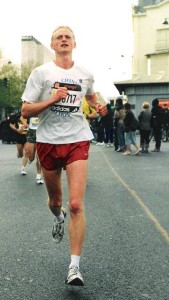
My first marathon in Paris
The race was the icing on the cake. The happiness of finishing the marathon even surpassed the happiness I experienced during my training. Although the last three miles were sheer torture and I felt like a shipwreck survivor battling to shore, I crossed the finish line in ecstasy. My time of 2 hours 45 minutes wasn’t too bad either.
To me the charm of running races is the opportunity for self-conquest. You know you are going to hurt, but you also know there is a reward waiting for you at the finish line that no money can ever buy. It’s the happiness of self-transcendence, the satisfaction that springs up inside when you have tried your very best. A half-hearted effort brings no joy. That’s why I try to give everything when I race.
Every serious runner, whether amateur or professional, has had at least one perfect race. Mine was the Amsterdam marathon of 2010. Since I lived in Amsterdam and the race course went right by my house, it felt like a home game. My preparation went smoothly – close to perfect. In the weeks leading up to the marathon, my body felt light and weightless, as if its engine had been replaced by an eight-cylinder.
Aside from training hard, I had also practiced visualization. The days before the race I pictured myself flying over the course and crushing the 2:30 barrier, which had been a long-standing goal. Sri Chinmoy writes, “Imagination has a world of its own. From there, the reality descends into our physical mind.” During the marathon I experienced exactly that. I was flying over the course as I had done in my visualizations. My dad rode behind me on his bike, encouraging me the whole way. The last five miles were utter euphoria. The discouraging end-of-marathon pain and discomfort were completely absent and I felt only joy and satisfaction.

Amsterdam marathon finish!
I finished in 2:27, lowering my previous best time by nine minutes. The happiness that resulted from that race was so pure and intense, it lasted for a long time. It had been my biggest self-transcendence so far, but I felt I was not the doer. I felt it had been God’s Grace working in and through me.
Ultimately self-transcendence brings us in touch with our own divinity, with God’s Love and Compassion deep within us. In the end, I think that is the reason why I love racing so much. It brings me closer to the Source.

How to Conquer Your Fears
I watched my first and only horror movie when I was thirteen years old. We were on a trip with my soccer team and one of the guys brought the movie ET, based on the book by Stephen King. Since everyone in the room was watching, I joined in. It was a traumatic experience. Months later I still had trouble sleeping and often lay in my bed paralyzed with fear. I vowed never to watch a horror movie again.
Fear Is the Opposite of Happiness
To this day I have never understood why people like horror movies. Why would you watch something that invokes such unpleasant, negative feelings? Fear is the opposite of happiness. We simply cannot be happy if we have fear, even if it is only an iota.
“Fear buys our coffin long before we are dead,” my spiritual teacher Sri Chinmoy used to say. So if we want happiness in life we need to get rid of this negative quality. The good news is that fear can be conquered. It can be totally transformed, so that we can lead a fear-free, joy-filled life.
The first step to a fear-free life is to realize that fear is totally useless. It has nothing to offer us, and nothing to tell us. Once we are thoroughly convinced of this truth, it is only a matter of time before fear leaves us for good. The problem is that we often unconsciously cling to fear. Because we feel it is powerful, we listen to it. But fear is only powerful because we make it so. We allow it to take root inside us and grow into a tall, ugly tree. This ugly tree spoils your heart’s garden and blocks your life’s view. Why keep a tree like that? The moment you convince yourself of the fact that fear is truly useless, you will be given the capacity to uproot this tree from your heart and life. Fear focuses only on the negative.
Let Go of the Grip of Unseen Enemies
When we are gripped by fear, we feel the threat of unseen enemies all around us. We forget that we also have many unseen friends. To conquer fear we have to focus on our positive inner qualities: joy, peace, light and power. To our wide surprise, we will see that fear is no match for them. But to be able to focus our attention always on the positive, we need to practice concentration and meditation. These techniques will strengthen our power of focus, so that we can steer our attention in any direction we choose. Naturally, we will steer it away from fear and keep it centered on light and peace, which are the things that will make us happy and fulfilled.
We forget that we also have many unseen friends. To conquer fear we have to focus on our positive inner qualities: joy, peace, light and power. To our wide surprise, we will see that fear is no match for them. But to be able to focus our attention always on the positive, we need to practice concentration and meditation. These techniques will strengthen our power of focus, so that we can steer our attention in any direction we choose. Naturally, we will steer it away from fear and keep it centered on light and peace, which are the things that will make us happy and fulfilled.
Through Prayer and Meditation Fear Silently Disappears
Before I started my spiritual life I used to be afraid of many things. Even anticipating the spiritual life itself induced a kind of fear in me. I was venturing into the unknown: What would I find there? Would I not lose myself in the process? But when I really started practicing my prayer-life and meditation-life I soon discovered that I didn’t lose anything worth keeping. The only thing I lost was my fear. It disappeared silently, without a trace, and never came back. Occasionally, it forgets that it is no longer welcome and tries to insinuate itself into my life. When that happens I concentrate on the light inside my heart and try to bring its purity to the fore. This is very effective in driving away my fear.
Fear comes from separation. We are afraid of something or someone because we feel our existence is totally separate from that person or thing. In reality however, we are all one. All spiritual Masters have realized this truth and have told us that the sense of separation is only an illusion. Therefore, the best way to conquer fear is by expanding our consciousness and growing into this feeling of oneness. This expansion comes through the practice of daily meditation.
With our conscious awareness we become one, totally one with the universe, with the universal Reality … Through expansion, when we pervade the entire world, when we feel our very breath in other beings, in the entire universe, then we cannot be afraid of anything. Through the expansion of our limited consciousness, our physical consciousness, our earth-bound consciousness, we can conquer fear. —Sri Chinmoy (( From the book Three Strangling Sisters: Fear, Jealousy and Insecurity, made available to share under a Creative Commons license. ))
Ultimately our spiritual growth through concentration, prayer and meditation is the only permanent solution to the problem of fear. It will take time, effort, patience and determination, but then again, nothing worthwhile is ever free. We have to work hard if we really want to rid ourselves of fear. Although difficult, it is not impossible. Now is the ideal time to introduce changes that will enable you to create a fear-free life. You can start today.
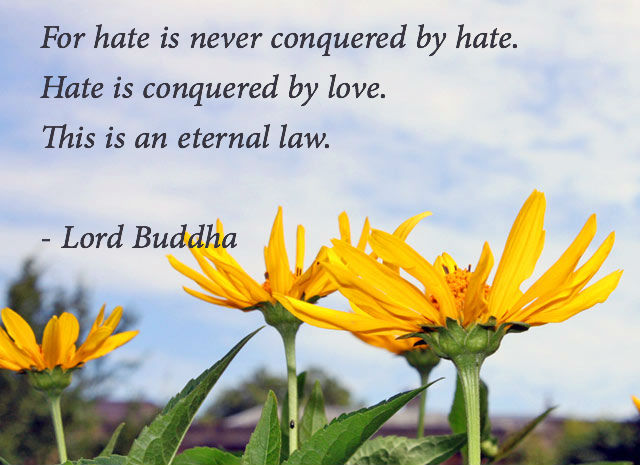
Quotes on Love
Quotes on Love by Mother Teresa:
Let us always meet each other with smile, for the smile is the beginning of love.
Love begins at home, and it is not how much we do…but how much love we put in that action.
There is a terrible hunger for love.
We all experience that in our lives – the pain, the loneliness.
We must have the courage to recognize it.
The poor you may have right in your own family.
Find them.
Love them.
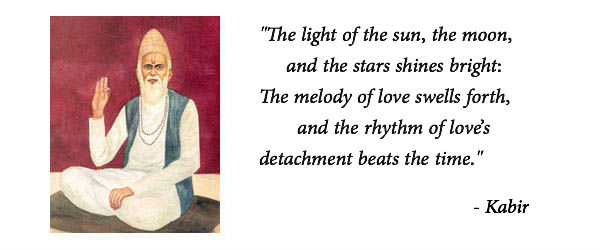
There was a time
When I loved you,
O my thought-world.
But now I love
The beauty of a silence-mind
And
The purity of a gratitude-heart.
Sri Chinmoy ((From the book Ten Thousand Flower-Flames, Part 9, made available to share under a Creative Commons license))
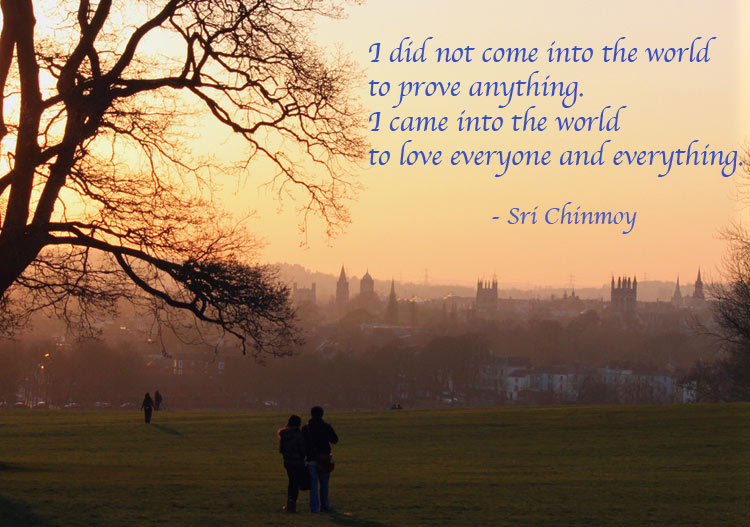
Love is the beauty of the soul.
Saint Augustine
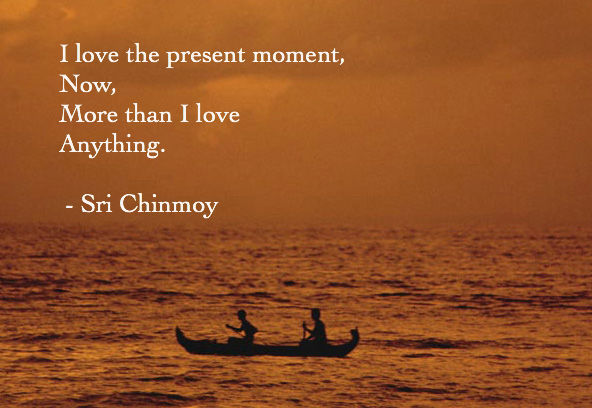
Ye have heard that it hath been said, Thou shalt love thy neighbour, and hate thine enemy. But I say unto you, love your enemies, pray for them that persecute you…For if ye love them which love you, what reward have ye? Do not even the tax-gatherers do the same?
The Life and Morals of Jesus
(The Bible as translated and edited by Thomas Jefferson)
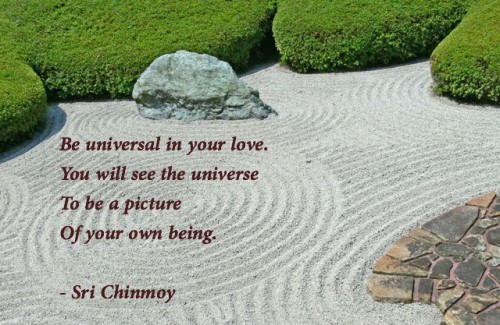

Meditation: Running the Bases
Why meditate?
There are a lot of reasons to meditate. When I first started, I was the mother of two young boys, the wife of a demanding man, and a full-time researcher in a university setting. I needed to have a tiny bit of space that I could call my own, and I was desperate to have some relief from my anxiety. I read an article about transcendental meditation and made up my own mantra. I proceeded to meditate by mentally repeating my mantra for 15 minutes each morning and evening, for almost ten years. It helped me to relax and provided me with some time out, and I was grateful for the practice.
Finally, when I grew tired of this approach, I saw a notice posted in a shop window in my neighborhood, “Meditation class forming.” I went, and it turned out that the class was given by two students of Sri Chinmoy, the author of The Jewels of Happiness, as well as Meditation ((Sri Chinmoy, Meditation, New York: Agni Press, 1989. You can purchase this book at Amazon. Or, if you go to the Sri Chinmoy Library online, you will be able to read another of Sri Chinmoy’s books on meditation, Meditation: Humanity’s Race and Divinity’s Grace free of charge.)) and a number of his other books. The class teachers invited us to attend a meditation session with their teacher, and said, “It will change your life.” I remember thinking, “Hm, I doubt it will change my life, but I’m curious, so I think I’ll go.” It did change my life! Meditating using Sri Chinmoy’s approach has revealed to me a large number of reasons to want to meditate: to see myself and others more clearly; to have some detachment from the daily drama of my life; to open new doors to creativity within myself; and to experience moments of happiness and peace unrelated to personal or political current events.
How to meditate
Silencing the mind is the gateway to all meditation practices. It is easier said than done! A very noisy mind, comparable to New Year’s Eve on Times Square, is the typical human condition. Different meditation traditions recommend different approaches to quieting the mind. One effective method is to focus on the breath. Pay attention to the air as it comes into your nostrils and then fills up your belly, and then notice as your belly flattens and the air goes out through the nostrils again. You can repeat this process for five or ten minutes, or use it for only a few minutes to strengthen your concentration before you go on to meditate in some other way.
Another good approach to quieting the mind is to focus on a quality that you would like to have more of, such as happiness. As you breathe in, imagine that you are breathing in happiness, and as you breathe out, imagine that you are breathing out misery. You can continue with happiness for a few minutes, and then repeat the same process with a second good quality, and then a third. Yet another way to quiet the mind is to imagine that you are meditating inside a room. You are standing at the door to the room, and every time a thought tries to enter, you tell it to go away.
Most of us in the West admire the mind and what it can do quite a lot. We give great credit to smart people, and in our own lives we stay in the mind most of the time. While the mind is very useful to us in some parts of our lives, this habit of putting the mind on a pedestal is a bad thing, because it makes us neglect the heart. The mind usually delights in being critical of others, while the heart is the home of oneness. The path of meditation on the heart is the sunlit path, the fastest and safest way to establish a good meditation practice.
 The spiritual heart, located in the center of the chest, is the home of our feelings of unconditional love, gratitude, appreciation of self and others, and forgiveness. By focusing on our heart, we can bring the light of the heart into the mind, and silence the mind’s chatter. This practice is well worth the effort that it takes. To help you to meditate on the heart, I recommend the following exercise:
The spiritual heart, located in the center of the chest, is the home of our feelings of unconditional love, gratitude, appreciation of self and others, and forgiveness. By focusing on our heart, we can bring the light of the heart into the mind, and silence the mind’s chatter. This practice is well worth the effort that it takes. To help you to meditate on the heart, I recommend the following exercise:
“Kindly imagine a flower inside your heart. Suppose you prefer a rose. Imagine that the rose is not fully blossomed, it is still a bud. After you have meditated for two or three minutes, please try to imagine that petal by petal the flower is blossoming. See and feel the flower blossoming petal by petal inside your heart. Then, after five minutes, try to feel that there is no heart at all, there is only a flower inside you called ‘heart’. You do not have a heart, but only a flower. The flower has become your heart or your heart has become a flower.
“After seven or eight minutes, please feel that this flower-heart has covered your whole body. Your body is no longer here; from your head to your feet you can feel the fragrance of the rose…”
– Sri Chinmoy ((From the book The Meditation-World, made available to share under a Creative Commons license))
Something to watch out for:
Everyone who has meditated has found that the mind tends to natter on. No matter what technique we are using, we find, over and over again, that the mind intrudes. There are worries that can’t be forgotten; there are angry ideas that have the same staying power as the unwanted pop-ups on our infected computer. When this happens, you can return your mind to calmness by imagining that the thoughts are like birds flying across a vast sky, or like fish that ruffle only a tiny part of the ocean; or you can try to imagine that you are strangling each and every one of those thoughts; or you can remember the reasons why you want to meditate and why these unwanted thoughts are getting in the way.
It is important that you do not blame yourself when these thoughts intrude, or decide that you are hopeless and not cut out for meditation. It happens to everyone – if you were trying to run a five-minute mile, you probably would not consider yourself a failure every time you ran less quickly. ((To find additional suggestions that will help with establishing your meditation practice, please see Getting Started with Meditation, by Nirbhasa Magee.)) Like learning any skill, the more you practice the better you become. After some time you will find that when you sit down at your meditation place, you breathe a sigh of satisfaction, because you know that the irritations of life will soon diminish or stop.
The results of meditation
Different people have different experiences of meditation: the results depend on where we are starting from and what our goals are. Over a period of time, meditation has helped me to put some distance between myself and the immediate problems of my life. By becoming somewhat detached from my “issues,” I have often found that I am newly able to see solutions that I had not imagined before. Sometimes I have realized that my own behavior is the cause of problems that before seemed to be someone else’s fault. When I come to that understanding on my own, it is always more powerful and more lasting (as well as more pleasant!) than when someone else points the same thing out to me.
 Feeling grateful for what others do for me, and for the good qualities and good fortune that I enjoy, is something that has not come “naturally” to me. It is easier for me to see what is missing and what is wrong than to be grateful for what is right. But at least I have come to know which side of the picture is more satisfying for me to look at, and early in each meditation session I bring my attention to several things that I am grateful for. After I do that, I always feel better than I did before, and I now sometimes look at what I am happy about even as I go about my daily activities.
Feeling grateful for what others do for me, and for the good qualities and good fortune that I enjoy, is something that has not come “naturally” to me. It is easier for me to see what is missing and what is wrong than to be grateful for what is right. But at least I have come to know which side of the picture is more satisfying for me to look at, and early in each meditation session I bring my attention to several things that I am grateful for. After I do that, I always feel better than I did before, and I now sometimes look at what I am happy about even as I go about my daily activities.
Beyond the different techniques that help us to concentrate and focus, there is a place where there is only silence, light and peace. In that place, although it may be only for a few moments at a time, thought stops, and there are moments of genuine tranquility. For me, that state usually shows up as visible light, with an accompanying feeling of happiness, sometimes even bliss; although I think the experience is different for each individual. When I see this light, I feel that the effort of getting to this place was more than worth the trouble. The more years that I meditate, and the more often I meditate in any particular period of time, the more likely I am to have moments of deep peace during my meditations. Indeed, I am grateful for all that has brought me to this experience!
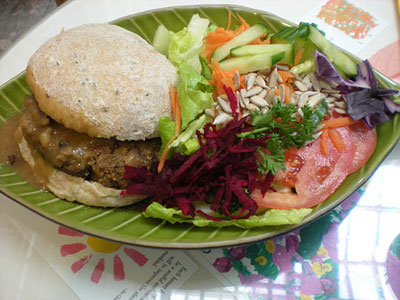
Exploring the World of Tofu
If health equals happiness, then it is worthwhile exploring the option of becoming a vegetarian. A series of studies began at the Linda Loma University, California, in the 1970s and 1980s and continue to this day. These studies have found that vegetarians live longer than meat eaters. Fruits, vegetables, nuts and legumes–foods frequently consumed as part of a vegetarian diet–help to reduce the risk of cancer, heart disease and Type II diabetes. A vegetarian diet also helps to control body mass index, waist size and boosts brain health.
If a vegetarian diet seems like an unattractive proposal, why not start by simply reducing meat in your diet and replacing it with some of the tastier vegetarian foods? In this article, we will discuss tofu, which is derived from soy beans and is a very common meat substitute in a vegetarian diet.
An introduction to tofu
Tofu is one my favourite vegetarian foods: high in protein, low in fat and easy to cook. You can get it in health food stores, and (often much more cheaply) in Chinese and oriental food stores. By itself it is pretty bland in taste and appearance so it needs to be flavoured and seasoned well to make it tasty and appealing. Tofu will not absorb oil or fat, leaving it crunchy on the outside and soft in the middle. It will, however, absorb non-fatty liquids, for example, tamari, soy sauce, ginger juice, lime juice, spices, pepper and salt.
For more info on the nutritional value of protein, please scroll down to the bottom of this article. Then try out these tofu recipes and enjoy a virtuous feast!
Pan-fried tamari tofu
What you need
250g tofu, cut into slices
Olive or coconut oil
Tamari or soy sauce (tamari is a gluten-free type of soy sauce)
Slice of lime (optional)
Ginger (fresh or powder)
Curry powder
What to do
1. Dry off the tofu with a paper towel.
2. Sauté the tofu in some olive oil, a squeeze of lime, ginger and a generous sprinkling of tamari (or soy sauce) until it browns.
Scrambled tofu with turmeric and fried onions
What you need
300g silken tofu
Olive or coconut oil
1 tsp turmeric
½ tsp ginger
Tamari or soy sauce
2 red onions, chopped
What to do
1. Drain tofu of excess water.
2. Put oil and tofu in a frying pan.
3. Fry the onions in a separate pan.
3. Mash the tofu in the frying pan with a fork.
4. Add a dash of tamari or soy sauce and the spices. Stir the mixture and heat.
5. It can take up to 10 minutes in the pan for the excess moisture in the tofu to evaporate. The finished consistency will be like scrambled egg.
6. Serve the tofu with veg, on toast or on a bed of rice, garnished with the fried onions.
Some hard facts on tofu
There are two main kinds of tofu: silken and regular. Silken tofu, also called soft, silk or Japanese-style tofu, has a softer consistency than regular tofu and will fall apart if not handled carefully. You may notice that silken tofu (soft tofu), unlike regular tofu, is sometimes packaged in aseptic boxes that do not require refrigeration. Regular tofu is usually found in the refrigerated section of your health shop or supermarket.
Both silken and regular tofu can be found in soft, medium, firm and extra firm consistencies. They are made from the same ingredients, but they are processed slightly differently. You can scramble silken tofu as in the recipe below or use it in desserts (tofu cheese cake) or salad dressings. Use regular tofu for stir fries.
The perfect protein
One half-cup serving of raw firm tofu contains 10.1 grams of protein. The recommended daily intake is 56 grams for most men and 46 for most women. A half-cup of tofu is approximately 4 oz by weight, or just under 1/3 of the average sized 14-oz package of tofu. By comparison, 1/2 cup dairy milk contains 5.1 grams of protein, one 3-oz egg contains 6 grams and 4 oz ground beef contains about 26 grams of protein. Tofu is an excellent source of vegetarian protein. ((http://vegetarian.about.com/od/healthnutrition/tp/protein.htm))

Try this scrumptious Veggie Burger at Peace Garden Vegetarian Coffee Shop & Power Juice Bar, Ottawa, Canada
One half-cup serving of raw firm tofu contains 94 calories. By comparison, 4 oz ground beef contains 331 calories, 1/2 cup of 2% milk has 60 calories and 4 oz of cheese packs 320 calories.
Tofu is low in calories for the protein it packs in. Here’s how it compares to a few other foods. For each 100-calorie serving, tofu contains 11 grams of protein. By comparison, 100 calories of ground beef provides 8.9 grams of protein, and a 100-calorie serving of cheese contains 6.2 grams.
Other nutritional info
One half-cup serving of raw firm tofu contains 5 grams of fat. 4 oz of beef packs a whopping 15 grams of fat, and one egg contains 5.5 grams of fat. Tofu is a cholesterol-free food, as are all plant-based foods. By comparison, a half-cup of 2% milk contains 9 mg of cholesterol, 4 oz of fish contains 75-100 mg of cholesterol and 4 oz ground beef contains about 113 mg cholesterol.
One half-cup serving of firm tofu contains about 227 mg of calcium or about 22% of the RDA. Tofu may contain a little bit less calcium depending on the brand and the way it was made so be sure to read the label if you’re concerned. Silken tofu contains approximately 133 mg, again depending on the brand.
One half-cup serving of firm tofu contains about 1.82 mg of iron, though this can vary greatly, depending on the brand. The RDA for women is 18 mg, and 8 mg for men.
By the way … don’t just keep it all to yourself; share with some friends. You’ll feel happier!
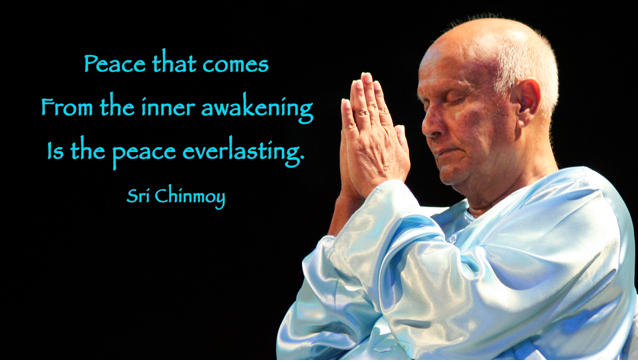
Quotes on Peace
It isn’t enough to talk about peace. One must believe in it. And it isn’t enough to believe in it. One must work at it.
Eleanor Roosevelt
Nobody can bring you peace but yourself.
Ralph Waldo Emerson
First keep peace with yourself, then you can also bring peace to others.
Thomas a Kempis
If you yourself are at peace, then there is at least some peace in the world.
Thomas Merton
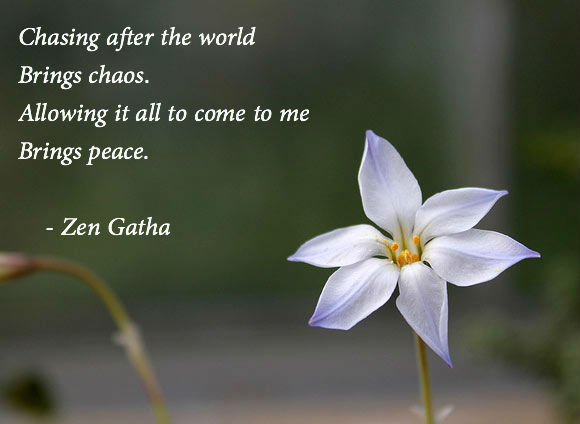
Reflections on Peace by Lord Buddha
To enjoy good health, to bring true happiness to one’s family, to bring peace to all, one must first discipline and control one’s own mind. If a man can control his mind he can find the way to Enlightenment, and all wisdom and virtue will naturally come to him.
Better than a thousand hollow words is one word that brings peace.
Those who are free of resentful thoughts surely find peace.
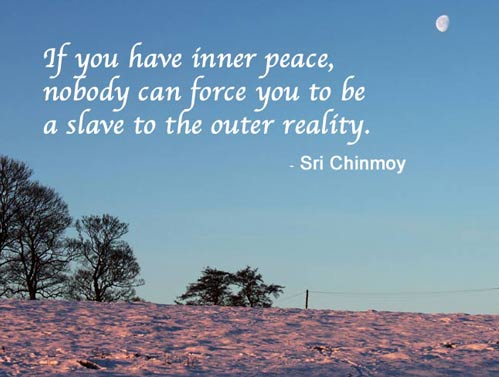
Quotes on Peace by Mother Teresa
If we have no peace, it is because we have forgotten that we belong to each other.
Peace begins with a smile.
Let us more and more insist on raising funds of love, of kindness, of understanding, of peace. Money will come if we seek first the Kingdom of God – the rest will be given.
Quotes on Peace by Nelson Mandela
If you want to make peace with your enemy, you have to work with your enemy. Then he becomes your partner.
Intervention only works when the people concerned seem to be keen for peace.
Peace and friendship with all mankind is our wisest policy, and I wish we may be permitted to pursue it.
Thomas Jefferson
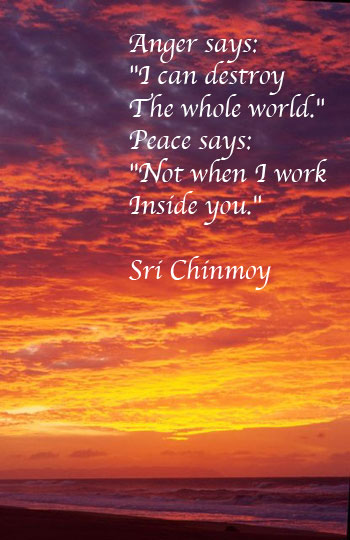 The real and lasting victories are those of peace, and not of war.
The real and lasting victories are those of peace, and not of war.
Ralph Waldo Emerson
The pursuit of peace and progress cannot end in a few years in either victory or defeat. The pursuit of peace and progress, with its trials and its errors, its successes and its setbacks, can never be relaxed and never abandoned.
Dag Hammarskjold, former UN Secretary General
Peace cannot be kept by force; it can only be achieved by understanding.
Albert Einstein
For every minute you remain angry, you give up sixty seconds of peace of mind.
Ralph Waldo Emerson
Each one has to find his peace from within. And peace to be real must be unaffected by outside circumstances.
Mahatma Gandhi
Never be in a hurry; do everything quietly and in a calm spirit. Do not lose your inner peace for anything whatsoever, even if your whole world seems upset.
Saint Francis de Sales
While you are proclaiming peace with your lips, be careful to have it even more fully in your heart.
Saint Francis of Assisi
We had a meeting in Japan and the one who represented the Hindu religion was the nephew of Mahatma Gandhi. And there was someone from the Muslim faith – the Executive General Secretary, who is living in Sri Lanka. The Dalai Lama was also there. We were talking about peace. In our talks there were no differences….I said, “We are all saying the same thing. Only your terminology is different.” They said, “Yes, there is nothing different. We will all go to Heaven because we are all seeking peace.”
Cardinal Jaime L. Sin
Archbishop of Manila and inspirer of the Filipino ‘people power’ revolution
from meeting with Jewels of Happiness author Sri Chinmoy ((Quote taken from the book Meetings With Luminaries In The Philippines, made available to share under a Creative Commons license))
Quotes on Peace by Martin Luther King, Jr
Peace is not merely a distant goal that we seek, but a means by which we arrive at that goal.
We must concentrate not merely on the negative expulsion of war but the positive affirmation of peace.
It is not enough to say we must not wage war. It is necessary to love peace and sacrifice for it.
He is happiest, be he king or peasant, who finds peace in his home.
Johann Wolfgang von Goethe
We are not at peace with others because we are not at peace with ourselves, and we are not at peace with ourselves because we are not at peace with God.
Thomas Merton
It is no longer good enough to cry peace, we must act peace, live peace, and live in peace.”
Shenandoah proverb
Better indeed is knowledge than mechanical practice. Better than knowledge is meditation. But better still is surrender of attachment to results, because there follows immediate peace.
Bhagavad Gita 12:12
If there is to be peace in the world,
There must be peace in the nations.
If there is to be peace in the nations,
There must be peace in the cities.
If there is to be peace in the cities,
There must be peace between neighbors.
If there is to be peace between neighbors,
There must be peace in the home.
If there is to be peace in the home,
There must be peace in the heart.
Lao Tzu
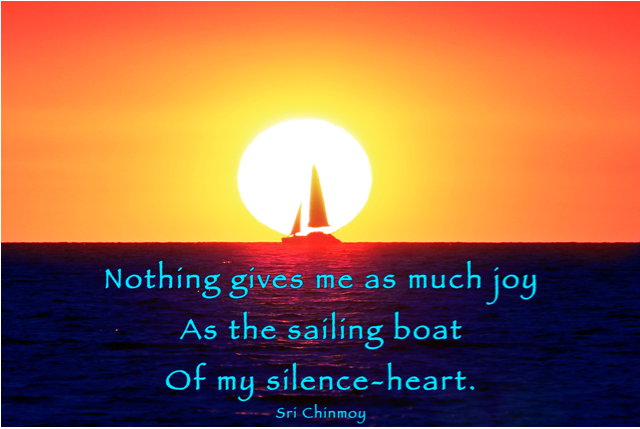
Quotes on Joy
We are shaped by our thoughts; we become what we think. When the mind is pure, joy follows like a shadow that never leaves.
Lord Buddha
I slept and dreamt that life was joy. I awoke and saw that life was service. I acted and behold, service was joy.
Rabindranath Tagore
Joy is a net of love by which you can catch souls.
Mother Teresa
A thing of beauty is a joy forever: its loveliness increases; it will never pass into nothingness.
John Keats
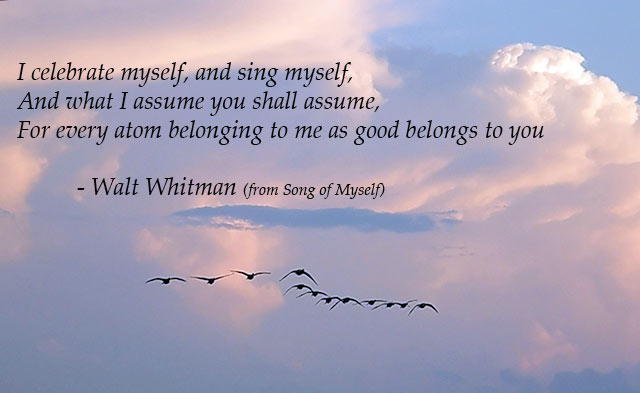
There are those who give with joy, and that joy is their reward.
Khalil Gibran
The child must know that he is a miracle – a miracle! Since the beginning of the world there has not been and until the end of the world there will not be another child like him. He is unique from the beginning until the end of the world. Now that child acquires a responsibility: “Yes, it is true, I am a miracle. I am a miracle like a tree is a miracle, like a flower is a miracle. Now, if I am a miracle, can I do a bad thing? I cannot, because I am a miracle, I am a miracle.”
Pablo Casals, legendary cellist
in an interview with The Jewels of Happiness author Sri Chinmoy ((From the book Four Summit-Height-Melodies, made available to share under a Creative Commons license))
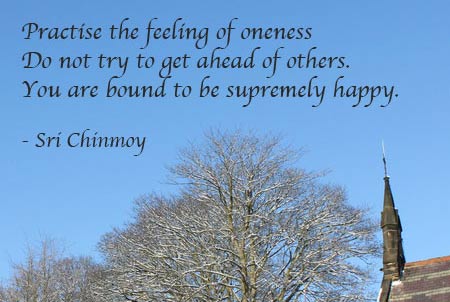

Why we perceive things as worse than they are…and how to stop it
Our minds can be our own worst enemy when it comes to happiness, because of its propensity to negativity, a tendency to brood on the bad more often than delight in the good.
A 2001 review of psychological literature gave numerous examples of studies showing that negative events have more impact than positive events in our lives, and that information about bad things tend to sink in more thoroughly than information about good. ((Baumeister, R. F., Bratslavsky, E., Finkenauer, C., & Vohs, K. D. (2001). Bad is stronger than good.)). Negative things grab our attention more powerfully than positive things (e.g., Pratto & John, 1991 ((Pratto, F., & John, O. P. (1991). Automatic vigilance: The attention-grabbing power of negative social information. Journal of Personality and Social Psychology, 61, 380–391.)) ), which is why you’ll rarely see a positive news headline on the front page of a newspaper.
Even when we form judgements about people, we tend to see their bad qualities as something intrinsic to them, while being more likely to ‘brush off’ their good deeds as a result of outer circumstances (e.g., Vonk 1994 ((Vonk, R. (1994). Trait inferences, impression formation, and person memory: Strategies in processing inconsistent information about people. European Review of Social Psychology, 5, 111–149.)) ).
Positive things are more common than negative things
However, this preponderance of negative thought is not necessarily based on reality. Indeed, there is evidence to show that positive things happen much more frequently in our lives. One study asked participants how often a list of eight positive (e.g., “A friend, romantic partner, or family member complimented me”) and eight negative (e.g., “A friend, family member, or romantic partner insulted me”) social events had occurred in the past week. Participants reported that the negative interactions occurred an average of 5.9 times and the positive interactions occurred an average of 19.0 times – a ratio of 3.2 positive events for each negative event. ((Gable, S. L. (2000). Appetitive and aversive social motivation. Unpublished doctoral dissertation, University of Rochester, Rochester, NY.))
Why is the mind so negative?
Numerous theories have been put forward as to why we allow negative events and feelings to occupy such a prominent place in our inner life. One obvious one is that it is part of our evolutionary programming, and that in our animal past we had to respond quickly to negative threats as a matter of survival. Another reason may be that negative events stick out more simply because they are not as common as the positive ones.
So…how do we restore the balance?
One way suggested by The Jewels of Happiness author Sri Chinmoy is to realise that this negative thinking is ultimately depriving us of the happiness we seek:
When a negative thought comes, we have to feel that it is a thief. A negative thought comes in the form of doubt, fear, jealousy, hypocrisy or meanness. We have to feel that each negative thought has come to commit a theft, to take something away from our inner life and inner wealth… What do we do when we see a thief? We chase him away and we do it with utmost confidence. We do not allow the thief to stay, because we know that we are the master of the house. ((by Sri Chinmoy, from the book The Soul’s Evolution, made available to share under a Creative Commons license))
Another powerful way to regain a proper mental perspective is by a regular practise of gratitude, and there is increasing experimental evidence that this practice can have profound effects on well-being. One study compared people who kept a journal where they noted down things they were grateful for on a weekly basis, against others who recorded hassles or neutral life events. The participants who had a gratitude journal tended to exercise more regularly, reported fewer physical symptoms, felt better about their lives as a whole, and were more optimistic about the upcoming week. (Emmons and McCullough 2003 ((Emmons, R. A., & McCullough, M. E. (2003). Counting blessings versus burdens: Experimental studies of gratitude and subjective well-being in daily life. Journal of Personality and Social Psychology, 84, 377-389. (link to pdf) )) )







